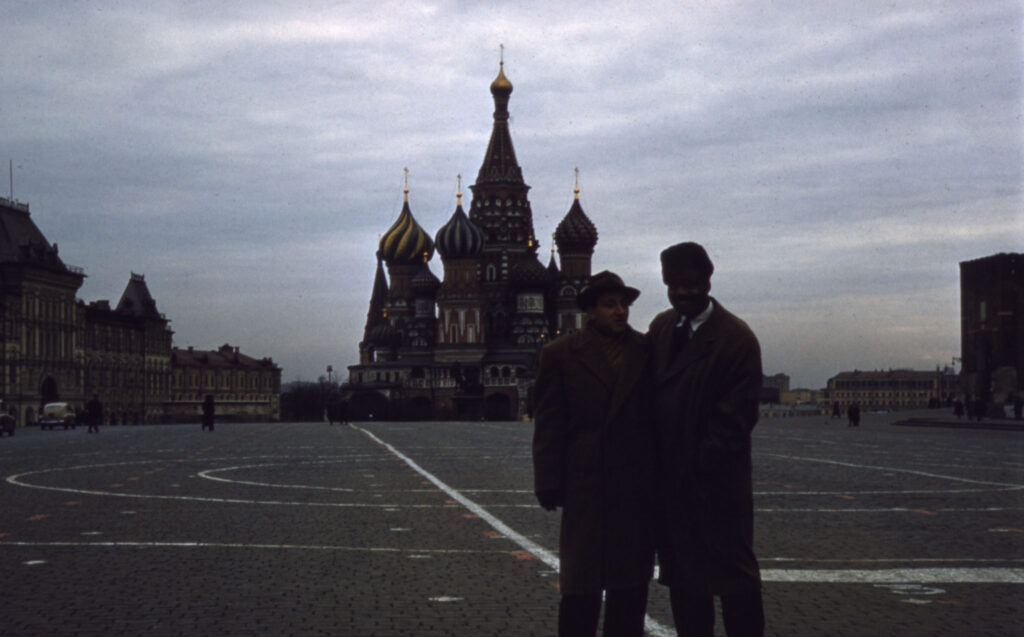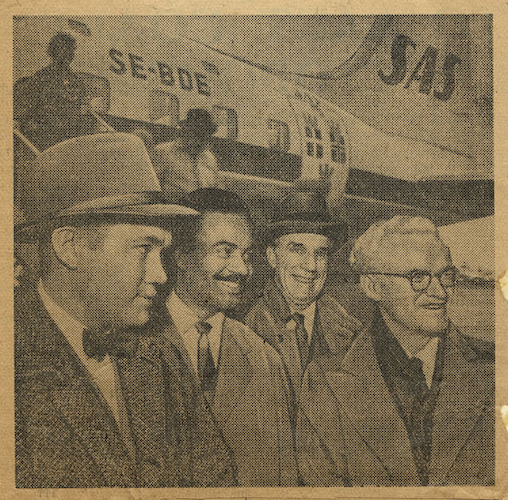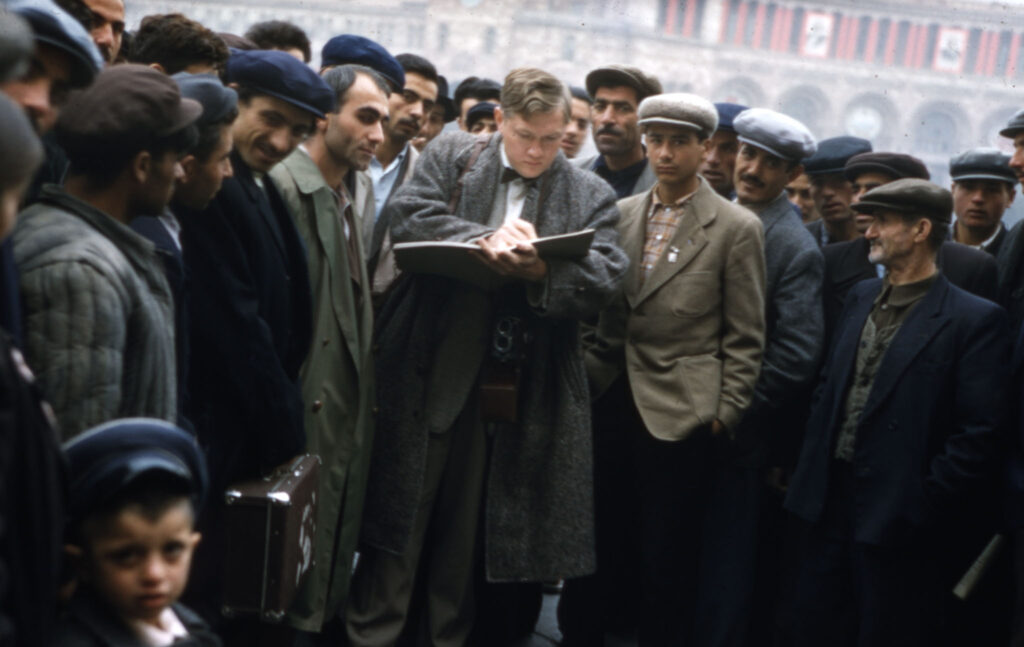Contributed by Kelin Baldridge, Project Archivist for the John Rhoden papers

One thing that surprised me while processing the John Rhoden papers was that John Rhoden traveled extensively in the Soviet Union during 1958 and 1959. As someone born in the 1990’s, the Cold War is very much history to me. As such, I was utterly unaware that American Citizens were able to enter the Soviet Union during the Cold War era. Because of this, I decided to do a bit of research into how John found himself behind the Iron Curtain for several months in the late 1950s.
John’s trip to the Soviet Union was the result of a socio-political phenomenon known as the Khrushchev Thaw. In the mid-to-late 1950’s, after the death of Joseph Stalin in 1953, the tensions of the Cold War came to a temporary decline. This was due in large part to the more relaxed social ideals of the new leader, Nikita Khrushchev, and the joint efforts for peace between Khrushchev and President Dwight D. Eisenhower. In this time period, both leaders were more willing to cooperate to find an understanding between America and the Soviet Union.

Khrushchev believed that the Soviet Union could match the Western world’s living standards, and as such, permitted exposure to Western culture within the Soviet Union. He allowed a relative amount of freedom in the arts and, most notably for John’s story, allowed Westerners to travel to the Soviet Union and vice versa.
In 1955, Khrushchev and Eisenhower met and in that same year, they agreed to start exchanging written materials. In 1956, Eisenhower made a speech at the People-to-People conference advocating contact between Soviet and American citizens in the search for a cross-cultural understanding. By 1958, the United States and the Soviet Union came to the United States-Soviet Cultural Exchange Agreement of 1958, also known as the Lacy-Zarubin Agreement.
The Lacy-Zarubin Agreement permitted cultural, educational, and scientific exchange between the two nations. This agreement opened the doors for John’s work as an art specialist touring the Soviet Union under the auspices of the United States Department of State.

In the Fall and Winter of 1958-1959, John visited the Soviet Union as a part of a team of artists, including painters William A. Smith, Lamar Dodd, and Franklin C. Watkins. Once in the Soviet Union, Dodd and Watkins followed separate programs, and Rhoden and Smith stayed together as travel companions.
The pair traveled extensively within the Soviet Union, visiting numerous countries, including Armenia, which, at the time, was not open to Western-visitors. They were granted special permission only after meeting and forming friendships with several Soviet representatives and artists.
During this tour, the pair focused on forming relationships with artists in the Soviet Union. They made the decision not to arrive with examples of their own work, so as not to be presumptuous, but brought slides showing American art. They visited countless art schools, artists’ studios, and museums. John reported that the Soviet artists and citizens were reserved at first, but were ultimately very curious about America and Americans. Overall, it seems that John had an excellent time with his Soviet peers.

The final aspect of John’s work with the Soviet Union, and the culminating point of the efforts for understanding between the U.S. and Soviet Union in this era, was the American National Exhibition in Moscow in 1959. This exhibition was accompanied by a Soviet Exhibition, held in New York in 1959. Both exhibitions displayed the presenting nation’s cultural and scientific innovations in an effort to promote cross-cultural understanding between the nations. Of course, ulterior motives existed. These exhibitions were used as opportunities for covert intelligence collecting through KGB and CIA operatives, posing as members of the exchange groups. Furthermore, they were intended to serve as propaganda for each nation’s way of life and system of government.

Correspondence asking Rhoden to prepare questions for the Moscow Exhibition, 1959.
John’s experience in the Soviet Union resulted in him having a minor role in the planning of the exhibition. Due to his experience, the exhibition planners asked him to write a series of questions and answers relating to American sculpture. These questions would be processed into an IBM RAMAC electronic machine and displayed at the exhibition, along with questions and answers about other aspects of American life.
John’s time in the Soviet Union seemed to be the result of a hopeful blip in history. In October of 1964, just five years after John visited the Soviet Union, as an aging Khrushchev grew increasingly erratic and undependable, a conspiratorial plan was carried out by Leonid Brezhnev and the Central Committee to force Khrushchev to resign. Khrushchev’s removal from his position as the leader of the Soviet Union led to the break down of the decreased USSR/US tensions resulting from the Khrushchev Thaw.
This, of course, is a simplified account of a very complex moment in history. However, I hope it serves to provide some context surrounding John’s time in the Soviet Union. John’s small, but not inconsiderable, role in this historical moment is yet another example of his historical and cultural relevance, so it seems both interesting and important to examine the larger picture.
This project, Rediscovering John W. Rhoden: Processing, Cataloging, Rehousing, and Digitizing the John W. Rhoden papers, is funded in part by the National Endowment for the Humanities, a federal agency.
ABOUT THE NATIONAL ENDOWMENT FOR THE HUMANITIES
Created in 1965 as an independent federal agency, the National Endowment for the Humanities supports research and learning in history, literature, philosophy, and other areas of the humanities by funding selected, peer-reviewed proposals from around the nation. Additional information about the National Endowment for the Humanities and its grant programs is available at: www.neh.gov.